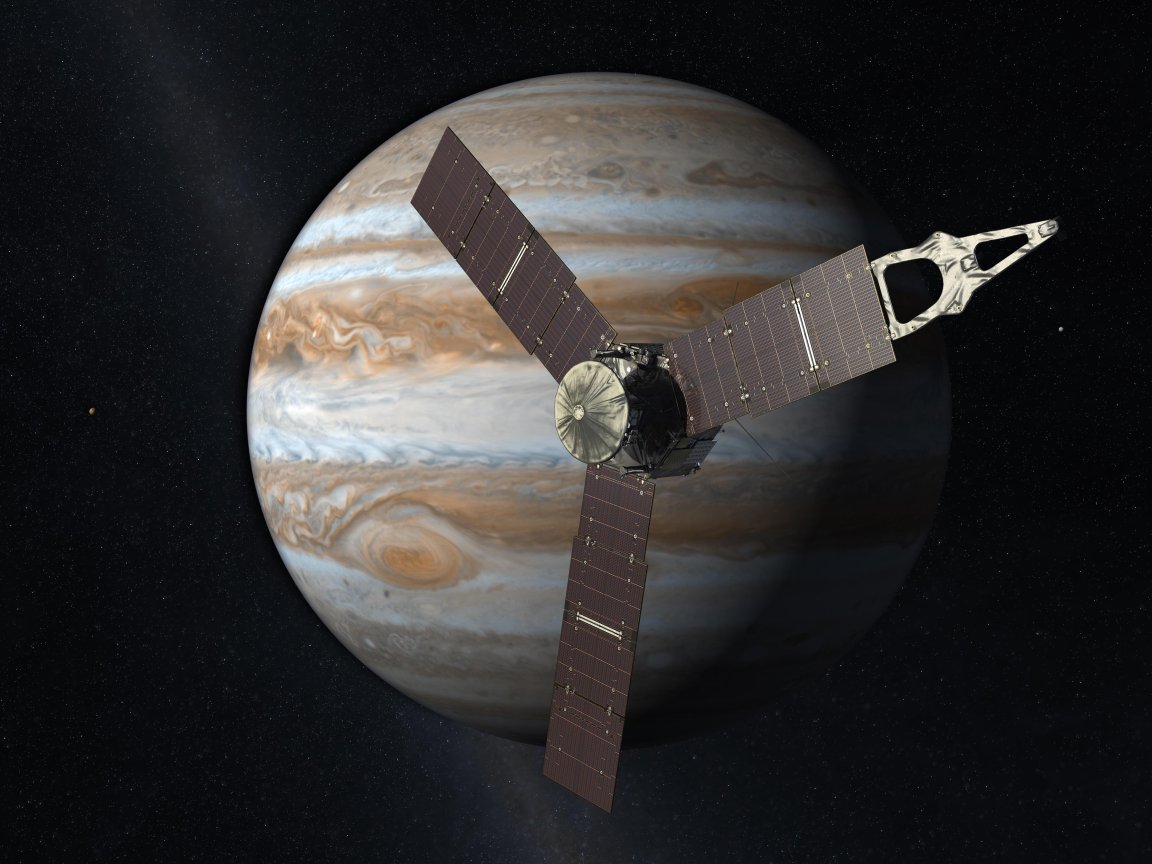
Journey to Jupiter
Fireworks aren’t the only reason to look to the skies this Fourth of July.
July 4 will also be the day NASA’s basketball court-sized Juno spacecraft will finally arrive at Jupiter, completing its approximate 600 million-kilometre (372 million-mile) trip through the Solar System.

As Juno approaches Jupiter’s harsh radiation environment, it will fire its main engine to slow down and then slip into orbit around the planet.
While there, Juno hopes to perform 37 close approaches, trying to learn more about the planet’s origins, structure, atmosphere and magnetosphere.
While this sounds relatively benign, Juno will be facing some of the harshest environs in the Solar System. The combination of the metallic hydrogen along with Jupiter’s fast rotation generates a powerful magnetic field that surrounds the planet with electrons, protons, and ions traveling at nearly the speed of light. This makes for a very harsh radiation environment, deadly for almost any spacecraft.
Because of this, Juno is armored like a knight. Juno’s flight computer and critical electronics are tucked inside a 400-pound titanium vault. It also has special radiation-hardened electrical wiring and shielding.
Juno is running on solar power, with three huge panels designed to face the sun during most of the mission. The wings are 29 feet long and 9 feet wide.
Giant Questions
Despite being the biggest kid on the block, we don’t really know that much about Jupiter. Juno hopes help us learn more about Jupiter’s core, answer questions around how much oxygen and water the planet has, and how its magnetic field works. It will also be probing Jupiter’s auroras—the most intense in the solar system.
After Juno completes its mission in 2018, it will plunge into Jupiter and burn up. Scientists planned this finale to eliminate the possibility that it could smack into Europa, one of Jupiter’s watery moons.